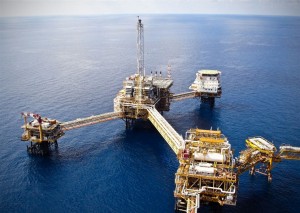The Internet of Things (IoT) has not left out any challenged industries, and it provides more opportunities for these industries to grow.

Sanjeev Verma, CEO of Biz4Intellia, said that with its continued development in onshore oil and gas transportation, IoT has also begun to take hold in offshore rig monitoring, and sees the challenges of the oil and gas industry as an opportunity for further growth.
When it comes to offshore operations in the oil and gas industry, monitoring pipelines can be a daunting challenge as most equipment is below sea level. Various equipment around pipes, such as networks, machinery, and other expensive equipment, also require regular inspections. Модуль связи CAN2.0
While sensors can help detect faults or anomalies, using these sensors to monitor every foot of a pipeline is not an efficient or economical solution. In order to provide maintenance to machinery and subsea pipelines, operators need to have sufficient knowledge of conditions below sea level.
This is the necessity of offshore oil rig monitoring. Let’s see which factors help a lot in offshore rig monitoring:
- Remote monitoring:
A long time ago, in order to check the health of drilling rigs, people checked with the naked eye. This means one needs to wait for a particular crack to become large enough to be seen with the naked eye, which is obviously not an ideal solution.
Remote monitoring plays a vital role throughout the oil and gas industry as it provides ultra-sensitive sensors that can detect possible failures very early and changes in frequency that trigger inspections. The data collected from the sensors is transmitted to the control room for further analysis and processing.
It is then combined with weather conditions to provide insight into changes in frequency and help determine long-term structural integrity management plans. With the help of a comprehensive rig monitoring system, in-depth understanding of the entire rig can be obtained from field data, which improves the accuracy and speed of decision-making, which in turn improves operational efficiency.
The comprehensive system gives rig personnel immediate access to critical data affecting operational performance. According to statistics, 92% of downtime is unplanned, and unplanned downtime is the most expensive. Sudden shutdowns cost oil and gas companies an average of $42 million a year, and in a worst-case scenario, could cost as much as $88 million a year.
Recent observational studies have shown that worn equipment, broken machinery, rusted water tanks and other signs of wear and tear are some of the common factors contributing to unplanned downtime. With careful monitoring, these unplanned outages can be predicted early on.
- Improve the safety environment of on-site workers:
In most casualties at oil and gas extraction sites, various situations such as trapped/sandwiched/impact hazards play a critical role. Statistical reports from various sources including work equipment, moving vehicles, equipment failures and high-pressure pipelines show that oil and gas extraction is a very dangerous job with a complex work environment, especially for workers who work alone.
No industry has experienced more casualties than the oil and gas industry due to fires and explosions. But the implementation of IoT in the oil and gas industry has set the standard for preventing fires and fire injuries on drilling sites. Workers can use fireproof clothing to prevent fires and explosions.
IoT sensors monitor asset performance and help improve asset efficiency. The data collected by the sensors is used to monitor faults, response times and inconsistencies, etc. In addition, rig monitoring systems can inform where the rig needs to be repaired based on its condition and maintenance, and can also help workers keep it safe. The strategy followed by the system has resulted in significant cost savings and improved worker safety. CAN
- Pay attention to the entire drilling platform:
Critical components in use, such as sensors, collect data related to oil quality, gas, temperature, humidity, leaks, flow, and many other factors. IoT gateways collect data from sensors and send it further to the cloud.
With IoT and its real-time monitoring capabilities, people can:
▲Improve compliance
By integrating into real-time data and worker safety regulations, compliance can be monitored and demonstrated as needed.
▲ Anticipate problems and take proactive action
After analyzing workplace data, alerts are sent before workers are affected.
▲Tracking employees
With the advent of rig monitoring systems, one can track the real-time location of workers and warn them, for example, not to enter a specific area/hazardous area.
▲Improved operation
In the event of an imminent disaster, critical data can be collected in real-time, allowing for further planning of better rescue operations.
There is no doubt that IoT is playing a key role in transforming the monitoring of offshore rigs. Much of the work on offshore rigs takes place in remote locations where it is difficult to track assets, but IoT has the power to connect all aspects of oil and gas operations, enabling real-time data analytics, predictive maintenance, asset management, and health and safety for faster make decisions and create a safer work environment.

